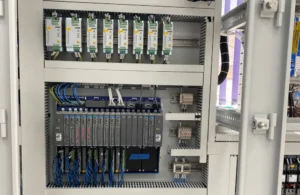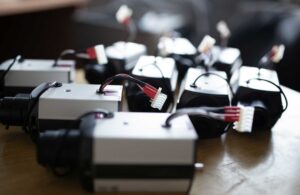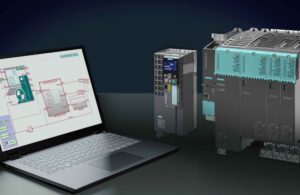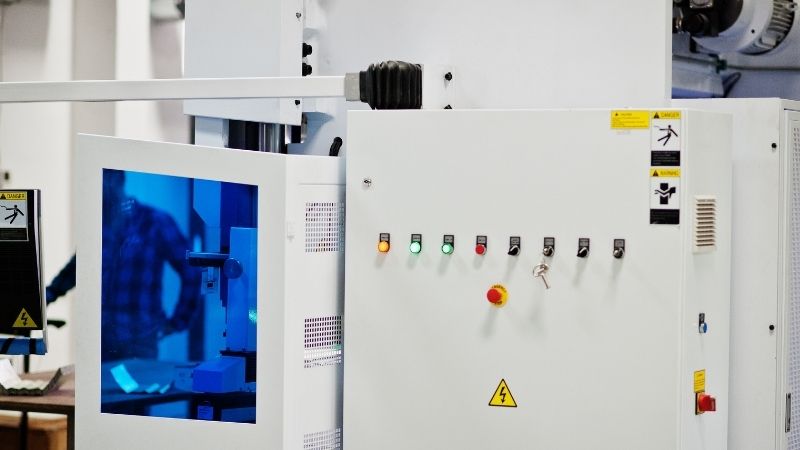RTD și termocupluri: senzori vitali pentru automatizarea industrială
Indiferent dacă sunteți un tehnician experimentat sau nou în domeniu, înțelegerea funcționalităților, avantajelor și aplicațiilor acestor senzori vă va îmbunătăți capacitatea de a implementa soluții eficiente de monitorizare a temperaturii.
Cuprins
Ce este un RTD și cum funcționează?
Detectoarele de temperatură cu rezistență (RTD) sunt de precizie senzori folosit pentru a măsura temperatura prin corelarea rezistenței elementului RTD cu temperatura. Fabricate de obicei din platină pură, nichel sau cupru, RTD oferă o precizie și stabilitate ridicate, făcându-le indispensabile în diverse aplicații industriale.
Cum RTD măsoară temperatura
RTD funcționează pe baza principiului că rezistența electrică a anumitor metale se modifică previzibil cu temperatura. Pe măsură ce temperatura crește, crește și rezistența elementului RTD. Această modificare este măsurată și convertită într-o citire a temperaturii, adesea prin intermediul a PLC card de intrare sau alte sisteme de monitorizare a temperaturii.
Tipuri de configurații RTD
RTD vin în diferite configurații de fire - cu 2 fire, 3 fire și 4 fire - fiecare oferind niveluri diferite de precizie și compensare pentru rezistența firului de plumb. RTD-ul cu 3 fire este utilizat în mod obișnuit în setările industriale, deoarece oferă un echilibru bun între complexitate și precizie.
Cum se compară RTD cu termocuplurile în măsurarea temperaturii?
Când vine vorba de detectarea temperaturii, RTD și termocuplurile sunt cei doi concurenți principali. Înțelegerea diferențelor lor este cheia pentru a selecta senzorul potrivit pentru aplicația dvs.
Precizie și stabilitate
RTD sunt renumite pentru precizia lor superioară și stabilitatea pe termen lung în comparație cu termocuplurile. Ele oferă de obicei o toleranță de ± 0,1 °C, ceea ce le face ideale pentru aplicații care necesită un control precis al temperaturii.
Interval de temperatură
În timp ce RTD sunt excelente pentru o gamă largă de temperaturi, termocuplurile excelează în măsurarea temperaturilor extrem de ridicate sau scăzute, adesea dincolo de intervalul pe care îl poate gestiona RTD. De exemplu, termocuplurile de tip K pot măsura temperaturi de până la 1.800°C, în timp ce RTD sunt în general limitate la aproximativ 850°C.
Timp de răspuns
Termocuplurile au, în general, un timp de răspuns mai rapid datorită construcției lor mai simple, făcându-le potrivite pentru procese dinamice în care schimbările rapide de temperatură trebuie detectate rapid.
Ce factori influențează toleranța senzorilor RTD?
Toleranța unui senzor RTD se referă la acuratețea și fiabilitatea acestuia în măsurarea temperaturii. Mai mulți factori pot influența toleranța unui RTD, asigurând o monitorizare precisă a temperaturii.
Calitatea materialului
Puritatea elementului RTD, adesea platină, îi afectează în mod semnificativ toleranța. Materialele de înaltă puritate prezintă schimbări mai previzibile de rezistență cu temperatura, sporind precizia.
Calibrare
Calibrarea regulată asigură că senzorii RTD își mențin precizia în timp. Calibrarea implică compararea citirilor RTD cu standardele de temperatură cunoscute și ajustarea după caz.
Condiții de mediu
Factori precum zgomotul electric, vibrațiile și temperatura ambiantă pot afecta performanța RTD. Ecranarea adecvată și practicile de instalare ajută la atenuarea acestor efecte, menținând toleranța senzorului.
Ce rol joacă firele în performanța senzorului RTD?
Cablajul unui senzor RTD joacă un rol crucial în asigurarea unor măsurători precise de temperatură. Numărul de fire și calitatea acestora pot influența performanța și fiabilitatea senzorului.
Configurația firului
RTD sunt disponibile în configurații cu 2 fire, 3 fire și 4 fire:
- RTD cu 2 fire sunt cele mai simple, dar sunt mai susceptibile la erori din cauza rezistenței firului de plumb.
- RTD cu 3 fire oferă o compensare mai bună pentru rezistența firului de plumb, oferind o precizie îmbunătățită.
- RTD cu 4 fire oferă cea mai mare precizie prin eliminarea completă a rezistenței firului de plumb din măsurare.
Material și calitate sârmă
Utilizarea firelor de platină de înaltă calitate asigură schimbări minime de rezistență fără legătură cu variațiile de temperatură. În plus, ecranarea adecvată a firelor poate împiedica zgomotul electric să afecteze citirile senzorului.
Practici de instalare
Instalarea corectă, inclusiv utilizarea puțurilor termice, poate proteja senzorul RTD de factorii de mediu și de stres mecanic, păstrând integritatea conexiunilor firelor și performanța generală a senzorului.
Cum se integrează PLC-urile cu senzorii RTD în automatizarea industrială?
Controlere logice programabile (PLC-uri) sunt parte integrantă a sistemelor moderne de automatizare industrială, iar integrarea lor perfectă cu senzorii RTD este esențială pentru monitorizarea și controlul eficient al temperaturii.
Conectarea RTD-urilor la PLC-uri
Senzorii RTD se conectează la PLC-uri prin intermediul cardurilor de intrare concepute pentru a interpreta schimbările de rezistență ale RTD în date semnificative de temperatură. Aceste module de intrare au adesea capabilități de intrare analogică pentru a gestiona natura continuă a măsurătorilor de temperatură.
Prelucrarea și controlul datelor
Odată conectat, PLC-ul procesează datele de temperatură pentru a lua decizii în timp real. De exemplu, dacă temperatura depășește un punct de referință stabilit, PLC-ul poate declanșa acțiuni precum activarea sistemelor de răcire sau reglarea vitezei motorului pentru a menține condiții optime.
Creșterea fiabilității sistemului
Integrarea RTD cu PLC permite strategii sofisticate de monitorizare și control, sporind fiabilitatea generală și eficiența proceselor industriale. În plus, PLC-urile pot înregistra date de temperatură în scopuri de calibrare și întreținere predictivă, reducând timpul de nefuncționare și costurile operaționale.
Întrebări frecvente
Care este avantajul principal al folosirii unui RTD față de un termocuplu?
RTD oferă o precizie mai mare și o stabilitate mai bună pe termen lung în comparație cu termocuplurile, făcându-le ideale pentru aplicații care necesită măsurători precise de temperatură.
Cum afectează configurația firului performanța RTD?
Configurația firului (2 fire, 3 fire sau 4 fire) influențează acuratețea citirilor de temperatură prin compensarea rezistenței firului de plumb. Mai multe fire oferă, în general, o precizie mai bună.
Pot RTD-urile să măsoare temperaturi extrem de ridicate, cum ar fi termocuplurile?
RTD-urile au un interval de temperatură mai limitat în comparație cu termocuplurile. Deși sunt potrivite pentru majoritatea aplicațiilor industriale, termocuplurile sunt preferate pentru măsurarea temperaturilor foarte ridicate sau scăzute.
Cât de des ar trebui calibrați senzorii RTD?
Se recomandă calibrarea regulată pentru a menține acuratețea, de obicei anual sau conform specificațiilor producătorului sau standardelor din industrie.
Alimentați-vă proiectele cu PLC Omron, Mitsubishi, Schneider nou-nouț, original – în stoc, gata acum!
Concluzie
- RTD-urile sunt senzori de temperatură foarte precisi și stabili, ideali pentru aplicații industriale precise.
- Termocuplurile oferă o gamă mai largă de temperatură și timpi de răspuns mai rapizi, dar sunt mai puțin precise decât RTD-urile.
- Configurația firelor (2 fire, 3 fire, 4 fire) joacă un rol semnificativ în acuratețea măsurătorilor RTD.
- PLC-urile se integrează perfect cu senzorii RTD, permițând monitorizarea și controlul sofisticat al temperaturii în sistemele de automatizare.
- Calibrarea regulată și practicile de instalare adecvate sunt esențiale pentru menținerea preciziei și fiabilității senzorilor RTD.
Înțelegând funcționalitățile și aplicațiile RTD-urilor și termocuplurilor, profesioniștii din sectorul automatizării industriale pot lua decizii informate pentru a-și îmbunătăți sistemele de monitorizare a temperaturii, asigurând eficiența și fiabilitatea în operațiunile lor.
Căutați PLC-uri noi, originale pentru proiectele dvs.? La Kwoco, stocăm cele mai noi PLC-uri de la mărci de top precum Omron, Mitsubishi, și Schneider. Cumpărați cu încredere - livrare rapidă, calitate garantată! Cumpărați acum
Contactaţi-ne
Doar completați numele dvs., adresa de e-mail și o scurtă descriere a solicitării dvs. în acest formular. Vă vom contacta în termen de 24 de ore.
Categoria de produs
Produse de vânzare fierbinte
De asemenea, puteți găsi aceste subiecte interesante

Ghidul complet pentru controlere logice programabile (PLC)
Ghidul complet pentru controlere logice programabile (PLC) În lumea cu evoluție rapidă a automatizării industriale, controlere logice programabile (PLC) au

Servomotoarele sunt AC sau DC? Înțelegerea diferențelor
O întrebare pe care o întâlnesc frecvent este: „Servomotoarele sunt AC sau DC?” Este un punct obișnuit de confuzie, iar înțelegerea răspunsului este crucială pentru oricine dorește să implementeze servomotoare în mod eficient în sistemele lor. Să ne aprofundăm în acest subiect pentru a clarifica diferențele și pentru a vă ajuta să luați decizii informate pentru aplicațiile dvs.

Cod de eroare a unității Siemens: un ghid cuprinzător pentru depanare și rezolvare
Acest articol oferă un ghid detaliat pentru înțelegerea și depanarea codurilor de eroare ale unității Siemens. Indiferent dacă sunteți inginer cu experiență sau începător în automatizarea industrială, această resursă cuprinzătoare vă va ajuta să diagnosticați și să rezolvați rapid problemele, minimizând timpul de nefuncționare și optimizând productivitatea. Merită citit, deoarece oferă informații practice, instrucțiuni pas cu pas și sfaturi de specialitate pentru a vă menține funcționarea fără probleme.






